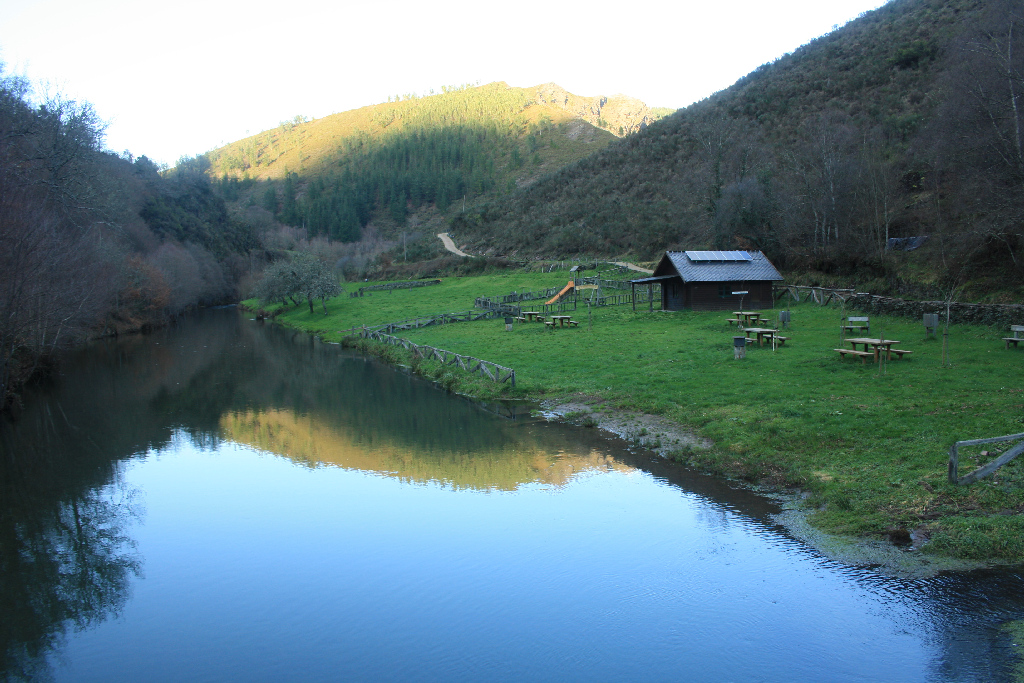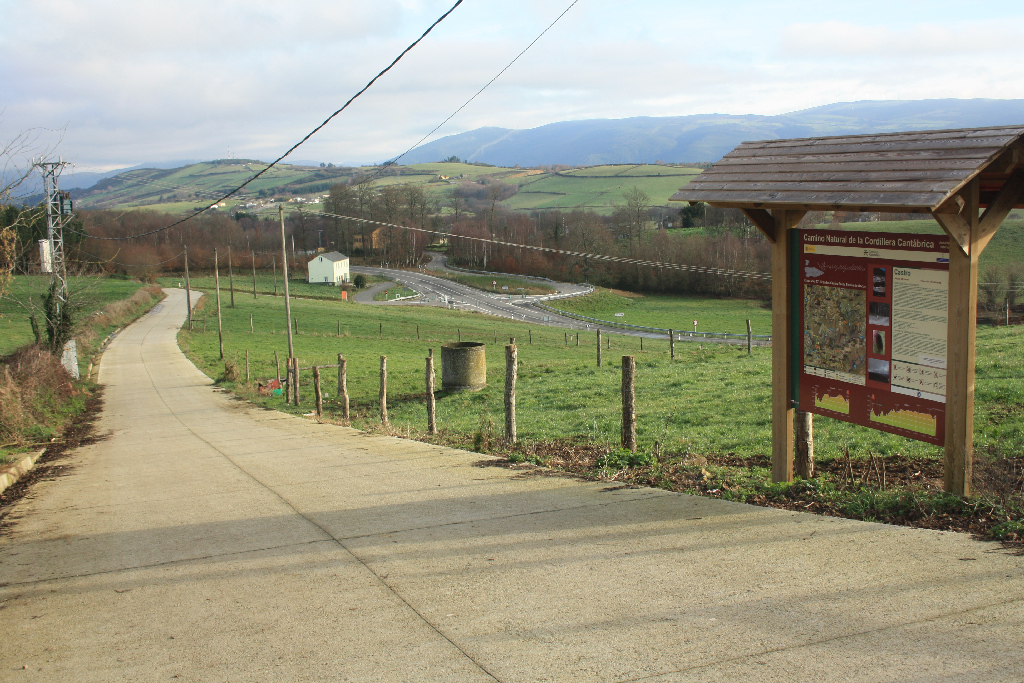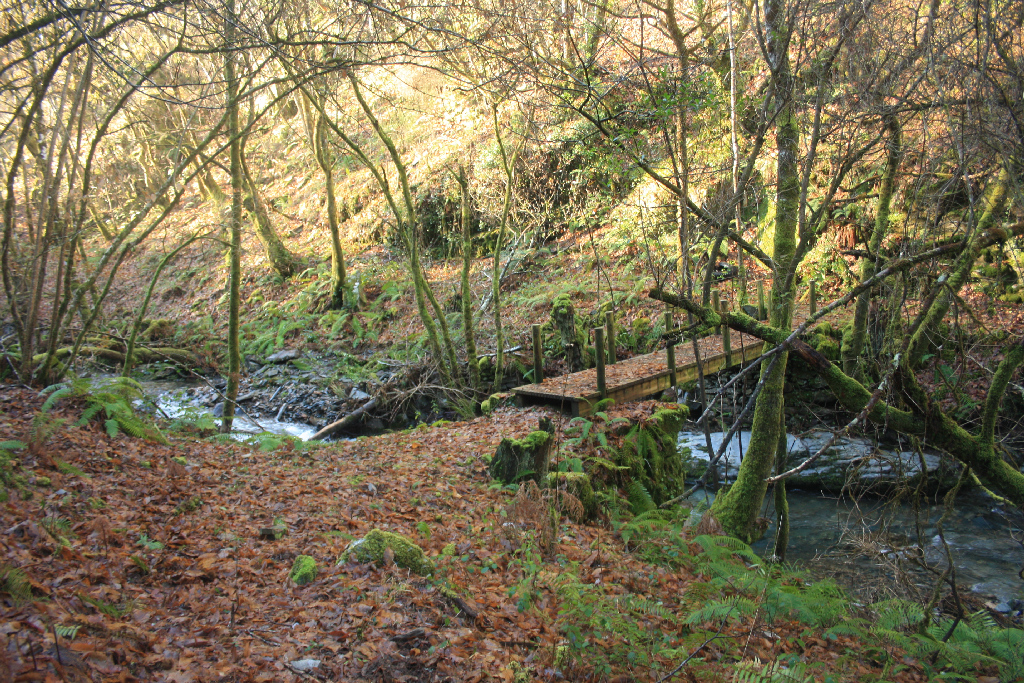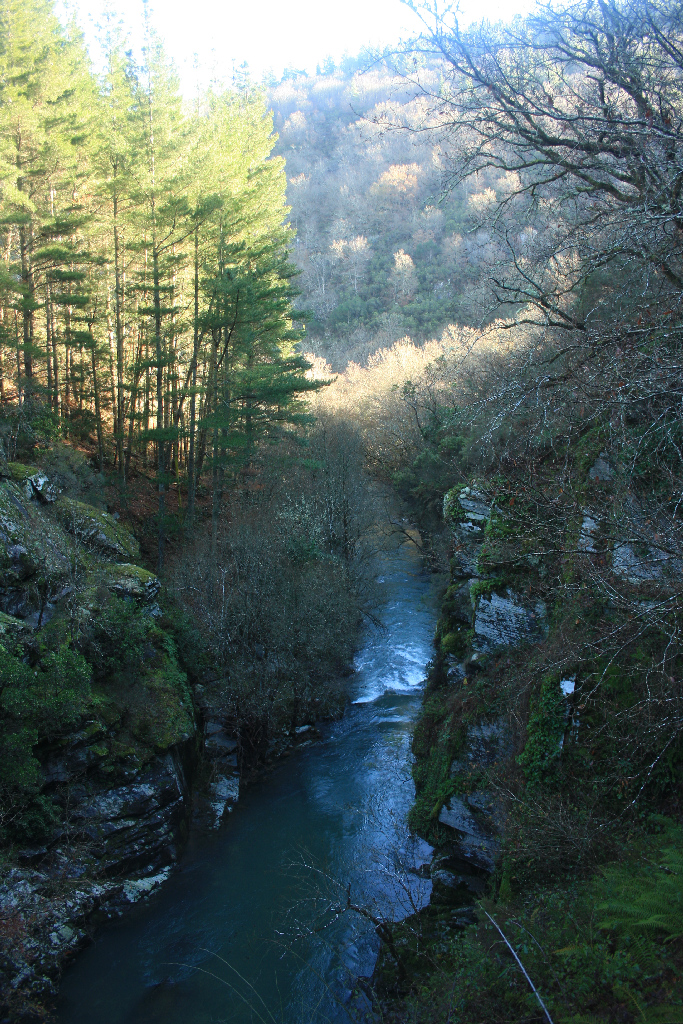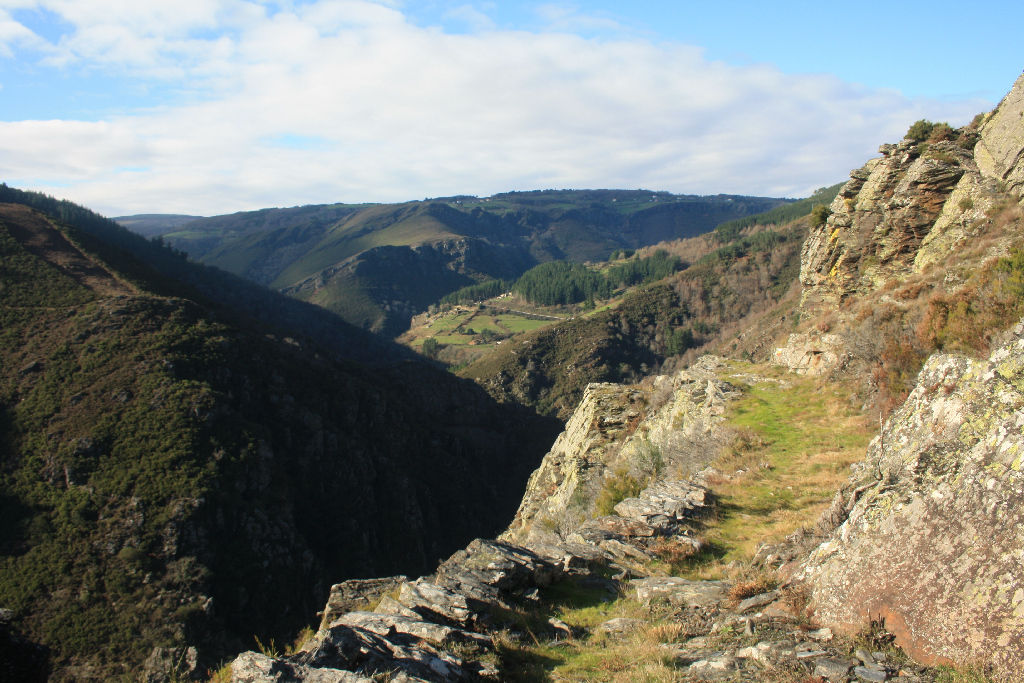- Home
- Rural Development
- Nature Trails
- Nature Trails
- Northwest Sector
- Cordillera Cantábrica. Asturias interior
Stage 27: Castro - Santa Eulalia de Oscos
Description

Iron and water
The Nature Trail ventures into Los Oscos, a county formerly known for iron smelting and production; its numerous foundries represented a watershed in its heyday. Starting at Castro, in Grandas de Salime County, the long journey through Asturias comes to an end at Santa Eulalia de Oscos, after this last section of the Trail traverses the Agüeira River Valley.
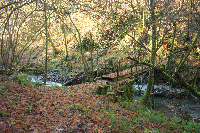
This last stage of the Cantabrian Mountains Nature Trail begins in Castro (Grandas de Salime County), and runs northeast along the slopes of Mount Marón and Agüeira River Valley, included in the Agüeira Basin Site of Community Importance (SCI), to Santa Eulalia de Oscos, the eponymous county capital.
An alternative route is also available from Castro, which runs south to La Coba, where it joins the main route.
The important ethnographic role of Los Oscos, the active conservation of its folk architecture and traditions, the great variety of landscapes, as well as the existence of several major river valleys that shape the territory has led to the area’s designation as Eo River, Oscos and Terras de Burón Biosphere Reserve.
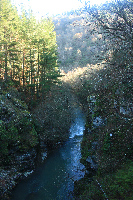
Starting at Castro, the first part of the main route leaves the town to the right and heads down a dirt track through pastures, followed by radiata pine (Pinus radiata) forests.
The forest track wanders downhill for a long stretch, until it reaches a wooden bridge over the River Caballos. Further on, skirting the slope, it arrives at the 14th century stone bridge of Ponsadabelle. The route crosses the River Agüeira and winds along a well-signposted stone path.
Further on, past a radiata pine forest, the route turns off to the right, onto a trail, leaving the forest track behind. The rest of the route runs along the contour line of the slopes of Mount Marón, until La Coba, with fantastic views of Agüeira River Valley.
The second part of the route leaves La Coba by road, then turns onto a path to the left, just before a curve. The trail runs north along the slopes of Mount Marón, populated with conifers and hardwood forests. After a few kilometres, it arrives at the recreation area of Ferreira, a village situated across the River Agüeira. The route continues along a well-signposted path, bordering a stream, to its final destination at Santa Eulalia de Oscos.
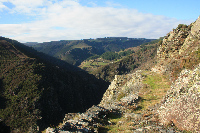
An alternative route to La Coba starts to the left of the youth hostel at Castro and heads down the road to Trabada. From here, the alternative route climbs through the village along a dirt track, past meadows, and skirts the slopes that line the River Agüeira to the east. The main route of the Nature Trail and the village of La Coba, to where the route heads, are clearly visible on the slope opposite the river.
The last part of this alternative route wanders down a forest track through pine forests, crosses the river and climbs to La Coba, where, following the directional signs, it joins the main route towards Santa Eulalia de Oscos.
Sites of interest
Profile
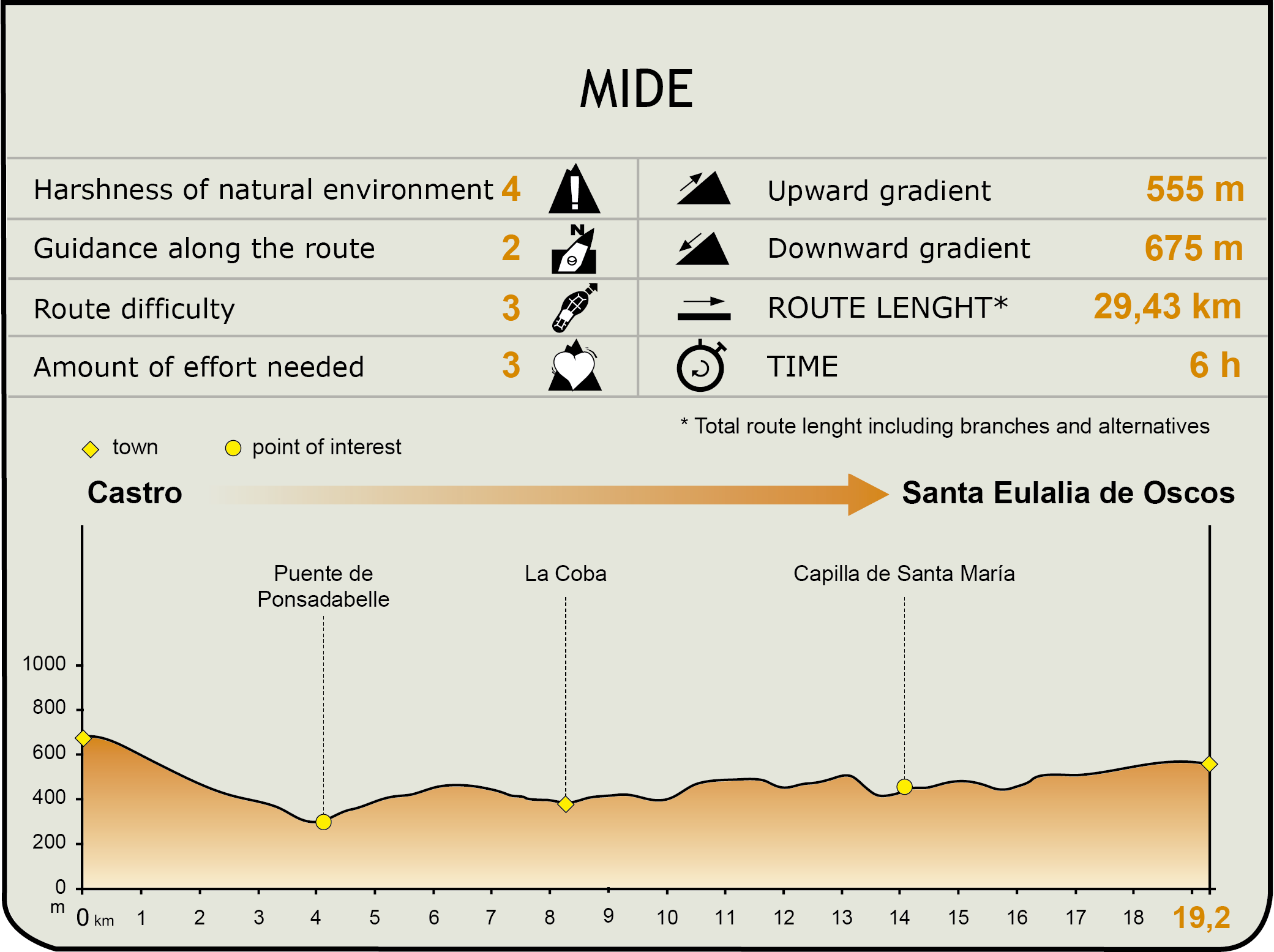
MIDE (Method for the Information of Excursions)
Featured
Further information
The iron industry
Hammers, foundries and forges can still be found in Los Oscos County. Many place names reveal a past when the entire territory was involved in the iron industry. Workshops and facilities operated at full capacity, powered by charcoal produced from its lush forests. The various hydraulic devices used to smelt and forge iron were driven by its mighty rivers.
The hammer and forge of Mazonovo, one of many facilities associated with traditional iron-making crafts in the region, is located two kilometres from the town of Ferreirela. The Mazonovo mallet was in use until 1975, and restored in 1989. The hydraulic hammer would strike and draw the iron bars produced in the forge. Remains of other hammers can be found near the River Agüeira.
The last step of the process is the forge, where the blacksmith would shape tools, hinges, pots, pans, knives, scissors or horseshoes. These products were sold beyond Los Oscos until the nineteenth century, when the increasing cost of raw materials and the introduction of blast furnaces in Nalón Valley hastened the decline of traditional blacksmithing.
The Marquis of Sargadelos
Santa Eulalia de Oscos County is strongly tied to one of its most illustrious sons, the Marquis of Sargadelos, creator of the famous Sargadelos ceramics. Antonio Raimundo Ibáñez was born in 1749 in the village of Ferreirela. He was the son of a notary and educated in the nearby monastery of Villanueva de Oscos. The economic situation of his family may have prevented him from attending university, pushing him to join Casa Guimarán at Ribadeo (Lugo), where he served for a time as administrator. He traded in wine, iron and linen, and became a shipowner. In 1784, after doing countless business overseas, he founded the Royal Maritime Company. The Marquis culminated his career with the construction of the Sargadelos industrial complex, between 1791 and 1806, which consisted of a forge, a cast iron foundry and the famous pottery factory, which would become the largest in Spain.
With the outbreak of the War of Independence in 1808, the Marquis of Sargadelos served on the Ribadeo Council. The relentless siege of the town by the French army forced the Council to accept the terms of the invaders. The inhabitants considered this an act of treason and the Council members had to go into hiding. Ibánez, who was considered pro-French, was intercepted on February 2, 1809 when he was fleeing Ribadeo, and killed in mysterious circumstances.
Today, the Ferreirela d'Abaxo neighbourhood is home to the Museo Casa Natal del Marqués de Sargadelos, whose main aim is to highlight the relationship that Antonio Raimundo Ibáñez had with his homeland. This is a historic-ethnographic museum with a carefully crafted traditional ambience. The birthplace of the Marquis has been painstakingly restored. It is the archetype of an Oscos rural house, with space for livestock on the ground floor, and the living quarters on the first. Ancillary buildings surround the main dwelling, creating an economically independent estate.
The textile hall and the Sargadelos hall, two of the crafts nurtured by the Marquis, are located, respectively, in the space for livestock, known as corte das oveyas and corte das vacas. Some fine examples of printed porcelain, manufactured by this major industry since the 18th century to the present day, are exhibited in the Sargadelos hall. Outside the museum are a stone basin (lavadeiro) and a granary with vegetation cover (horro).
